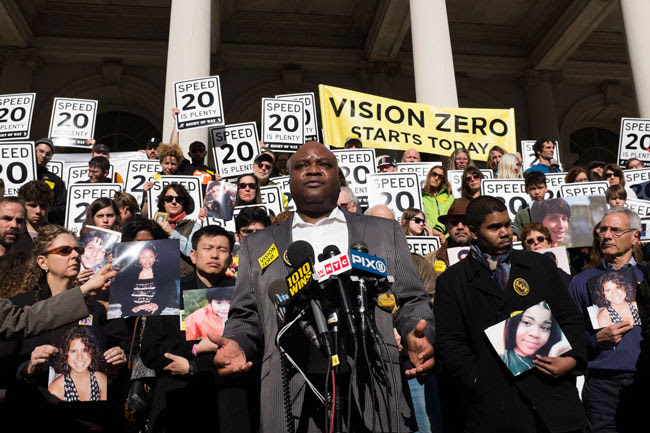
If you could save a person’s life, would you slow down? Of course you and most people would.
Convincing your neighbor might be more complicated. Luckily, science is on our side.
Transportation Alternatives just launched a campaign to lower New York City’s speed limit to a safe 20 mph. Why 20 mph? Because science says that 20 mph is the difference between life and death. In people-packed New York, more than 14,500 pedestrians and bicyclists are struck by drivers every year. There is one factor that decides whether or not a person survives that crash: speed.
Here’s how to convince your neighbor that 30 mph, New York City’s current speed limit, isn’t safe enough:
If struck by a driver at 30 mph, a person is nine times more likely to be killed than if struck at 20 mph.
If a senior citizen or child is struck by a driver at 30 mph, they’re 17 times more likely to be killed than if struck at 20 mph.
In 2014, drivers will strike and killed an estimated 180 bicyclists and pedestrians. If New York City’s speed limit was 20 mph, 161 of those lives could be saved.
The science behind the life-saving capacity of 20 mph is simple: the speed of a car or truck increases exponentially, and so does the distance required to stop that car or truck, and so does the striking force when that car or truck hits a human being. Tell all your neighbors. But it that does not do the trick, then write down their license plate number and turn over that information to the NYPD. Dial 311, or if is an emergency... Dial 911.